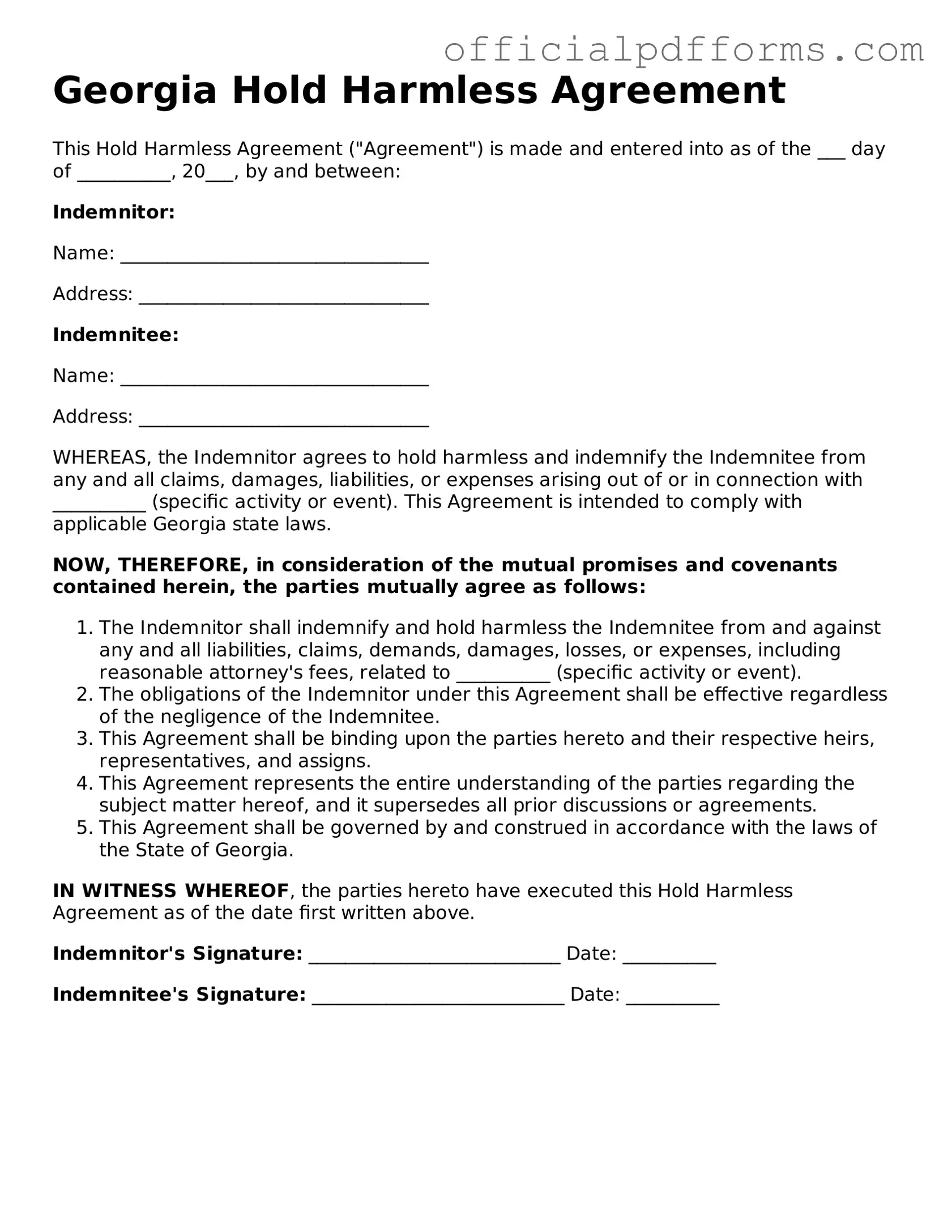What is a Georgia Hold Harmless Agreement?
A Georgia Hold Harmless Agreement is a legal document designed to protect one party from liability for any damages or injuries that may occur during a specific activity or event. This agreement essentially states that one party agrees not to hold the other party responsible for any losses or claims that might arise. It is commonly used in various situations, such as rental agreements, construction projects, or events where multiple parties are involved.
Who typically uses a Hold Harmless Agreement in Georgia?
Various individuals and organizations use Hold Harmless Agreements in Georgia. Common users include:
-
Property owners renting out spaces for events.
-
Contractors and subcontractors in the construction industry.
-
Event organizers hosting public gatherings.
-
Businesses that provide services where risks are involved, such as recreational activities.
Essentially, anyone looking to limit their liability in a potential risk situation may find this agreement beneficial.
What should be included in a Hold Harmless Agreement?
A comprehensive Hold Harmless Agreement should include several key elements to ensure clarity and enforceability:
-
Identification of Parties:
Clearly state the names and addresses of all parties involved.
-
Description of Activities:
Specify the activities or events for which the agreement is being executed.
-
Liability Waiver:
Include a statement that releases one party from liability for certain risks.
-
Indemnification Clause:
Outline the responsibilities of each party regarding claims or damages.
-
Signatures:
Ensure that all parties sign and date the agreement to make it legally binding.
Including these elements can help avoid misunderstandings and provide legal protection when needed.
Is a Hold Harmless Agreement legally binding in Georgia?
Yes, a Hold Harmless Agreement can be legally binding in Georgia, provided it meets certain criteria. To be enforceable, the agreement must be clear, specific, and voluntarily signed by all parties involved. It’s important to note that while these agreements can limit liability, they may not protect against gross negligence or willful misconduct. Therefore, it’s advisable to consult with a legal professional to ensure the agreement is valid and appropriate for your specific situation.
Can a Hold Harmless Agreement be revoked?
Generally, a Hold Harmless Agreement is a contract, which means it can be revoked or amended if all parties agree to the changes. To revoke the agreement, all parties should sign a written document stating their intent to terminate the agreement. However, keep in mind that if an incident occurs after the agreement has been signed but before it is revoked, the terms of the agreement may still apply. Therefore, it’s crucial to handle any changes carefully and with clear communication among all parties.
